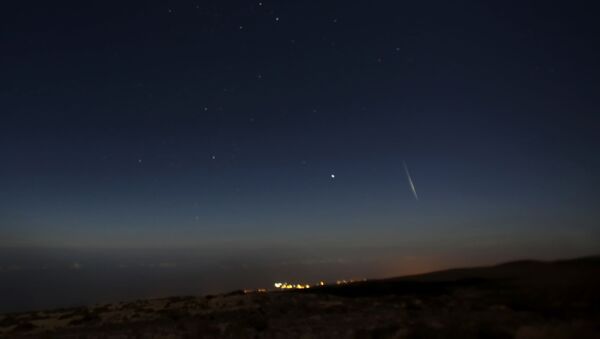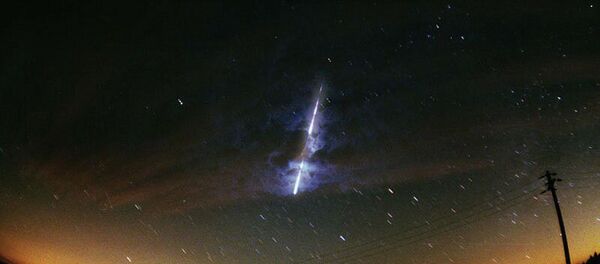https://sputnikglobe.com/20191207/its-raining-stars-hallelujah-this-years-biggest-meteor-shower-to-reach-its-peak-next-week-1077511125.html
It's Raining Stars, Hallelujah! This Year's Biggest Meteor Shower to Reach Its Peak Next Week
It's Raining Stars, Hallelujah! This Year's Biggest Meteor Shower to Reach Its Peak Next Week
Sputnik International
Meteor showers, which are usually named after their radiant point or the constellation from which they come, are rocky debris left by comets that burn up in... 07.12.2019, Sputnik International
2019-12-07T15:22+0000
2019-12-07T15:22+0000
2019-12-07T15:23+0000
https://cdn1.img.sputnikglobe.com/img/107751/10/1077511060_0:446:2833:2047_1920x0_80_0_0_7ee272419cccba13c9553e3386a3878c.jpg
Sputnik International
feedback@sputniknews.com
+74956456601
MIA „Rossiya Segodnya“
2019
Sputnik International
feedback@sputniknews.com
+74956456601
MIA „Rossiya Segodnya“
News
en_EN
Sputnik International
feedback@sputniknews.com
+74956456601
MIA „Rossiya Segodnya“
Sputnik International
feedback@sputniknews.com
+74956456601
MIA „Rossiya Segodnya“
society, newsfeed
It's Raining Stars, Hallelujah! This Year's Biggest Meteor Shower to Reach Its Peak Next Week
15:22 GMT 07.12.2019 (Updated: 15:23 GMT 07.12.2019) Meteor showers, which are usually named after their radiant point or the constellation from which they come, are rocky debris left by comets that burn up in the Earth's atmosphere.
This year's Geminid meteor shower is taking place from 4 December to 17 December, with the peak occurring between 13 and 14 of December.
The Geminids are produced as Earth moves through a stream of debris left behind by asteroid 3200 Phaethon.

17 November 2019, 00:45 GMT
Although people have the chance to see a shooting star any night of the year, meteor showers tremendously increase these odds. The Geminids, as well as the Perseids - another major meteor shower,
is able to produce more than 100 of these space rocks an hour.
This year, however, those who would like to see this majestic event could face a problem due to an almost full moon set to take place exactly when the meteor shower is expected to peak.


